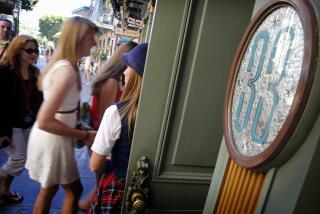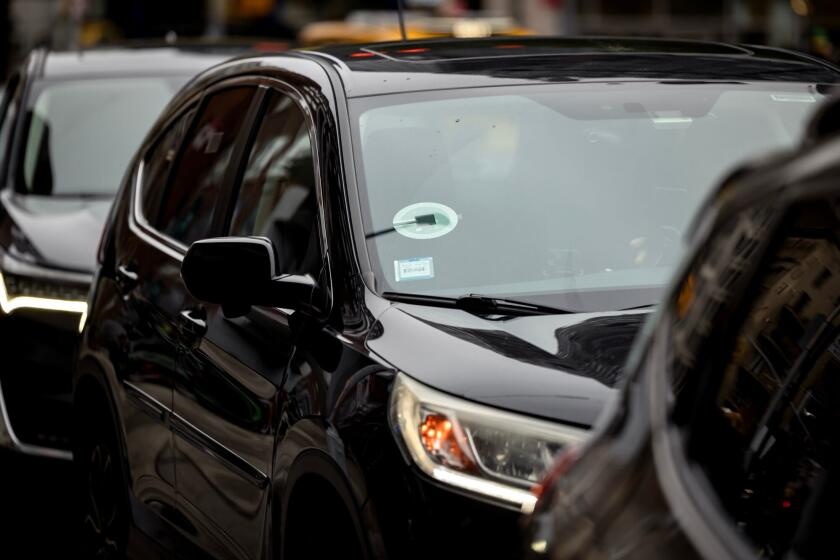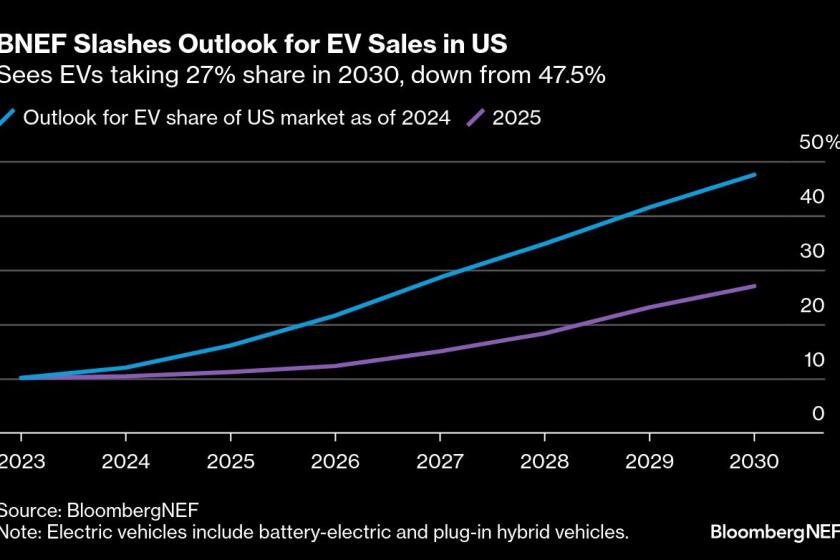Very Important Perks
- Share via
Maybe it’s time for a 20,000-mile checkup. Or perhaps the voice-activated sound system is malfunctioning.
Examine, if you will, the evolution of the mundane chore of having your car serviced. Back in the day, you’d pull on a pair of sweat pants and chug over to your neighborhood dealer. While a mechanic fiddled under the hood, you’d settle into a battered chrome and Naugahyde chair in a waiting room fragrant with tobacco, a paper cup of evil vending-machine coffee in hand. If your wheels required more than an hour’s attention or you’d already seen the “Melrose Place” rerun blasting from the 13-inch television set provided for the room full of carless and captive souls, you’d beg a loved one to pick you up or summon a cab to deliver you back home or to work. Maybe you would have walked to a bus stop, but probably not. After all, this is L.A.
People, people! It didn’t have to be that way! Now, in the Age of the Concierge, we know better. Clientele-coddling has become business as usual.
Over time, dealers embraced their customers’ sense of entitlement and discovered ways to minimize the discomfort and tedium that traditionally attended automobile maintenance. Courtesy vans seemed a gracious gesture, until that perk became routine. Customer loyalty was further nurtured by fleets of loaner cars. Although the small, loud TV has not been banished from some waiting rooms, eager-to-please dealers have continued the amenity escalation.
It has come to this: In the grease-free service drop-off area of Mercedes-Benz of Beverly Hills, free lattes and cappuccinos are dispensed from a cart. The Fletcher Jones Mercedes dealer in Newport Beach installed a putting green and employs a manicurist. Three years ago, Galpin Motors in Van Nuys became the first dealership in the country to house a full-service Starbucks. Customers who leave their cars at the service bay behind Galpin’s Volvo, Lincoln, Mercury and Jaguar showrooms can bide their time in a pristine, air-conditioned, well-lighted lounge next to the cafe. There’s a rack stocked with current magazines and newspapers, a separate playroom with video games for children, and cubicles that provide some privacy, should one need to plug in a computer or make phone calls.
Beau Boeckmann is vice president of Galpin Motors. His father bought out the dealership in 1968, so the 35-year-old has been around cars all his life. He’d been thinking about how to offer buyers something special even before he persuaded Starbucks to move in. It didn’t make sense, he says, that “whether you bought a $25,000 car or a $250,000 car, the experience wasn’t very different.”
The quarter-million-dollar sticker price became a reality two years ago, when Galpin began selling Aston Martins. How exclusive is this aerodynamically designed hunk of aluminum and carbon fiber? Since its inception 91 years ago, Aston Martin has produced about 26,000 cars. Sean Connery as James Bond drove an Aston Martin DB5, buffing the brand’s sexy, high-performance image. Later Bonds Timothy Dalton and Pierce Brosnan drove the Vantage and Vanquish models, respectively. Today, about 2,000 of the two current models are sold each year. Ferrari, one of Aston Martin’s chief competitors, makes about 5,000 cars a year for worldwide consumption.
With cars that cost $160,000 to $275,000, Aston Martin owners are members of a rarefied club. Boeckmann believed that membership should have its privileges, so he invested about $2.5 million in the creation of Club Aston, a showroom qua hangout hidden on the floor above Starbucks. It opened in April.
“To attract the Aston Martin customer, we needed something extra,” he says. “A luxury-car dealer in the Valley? Everyone’s so jaded in L.A. I thought about how to wow people. How do you wow billionaires?”
Start with a private entrance accessed by key card. “At clubs and designer boutiques around town, the real VIPs never go through the front door,” Boeckmann says. The walls of the private staircase are covered with suede and mirrors; undulating ribbons of brushed aluminum hang from the ceiling. Before entering the club, one must pass through a cylindrical vestibule upholstered in red leather. Lights flash, and familiar Bond theme music plays. At the push of a button, a section of the curved wall slides open. Beyond, a seductively lit Aston Martin revolves on a platform of gleaming black granite.
To the right is a convincing facsimile of a bachelor’s den--bookshelves surrounding a gas fireplace, a white leather sofa, a big-screen TV. A bar of burled walnut and barstools of black leather stand to the left. Lighting, a 101-gigabyte music archive and walls that move in and out of view are controlled from a small computer screen on the bar. Floors are beige travertine. Walls are covered in faux suede the color of whipped cream. Framed art and plush terry towels hang in the bathroom. If you didn’t know you were in a car dealership hard by the 405, you would think you’d wandered into a corporate penthouse (albeit one with a car parked in the living room).
Eddie Sotto, owner of a design and marketing firm and a former senior vice president of concept design at Walt Disney Imagineering, helped Boeckmann plan Club Aston. “What I do is create state-of-the-heart technology,” Sotto says. “I start by thinking about emotion--what someone should be feeling in a space. Then I design to create that emotional state. With a product like Aston Martin, you’re in the dream delivery business, so the environment should reflect that. The legacy of this car is part cinematic, part racetrack.”
In fact, Club Aston is empty most of the time. If members show up at all, it’s usually to talk cars with sales director Joe Van De Veere. An affable but never unctuous fellow, he must hold some kind of endurance record for car-centered conversation. “I have a few clients who come by every three or four days,” he says. “I can actually talk about anything, but I can talk about cars like nobody.”
When a new Aston Martin owner comes to pick up his or her car, the presentation is elaborately stage-managed. “My first delivery was in the evening, when the lighting in the club is very dramatic,” says Van De Veere. The customer came into the club and pointed to a gigantic stainless-steel vault glowing in the corner, behind sheer metallic curtains. “What’s in the vault?” he asked. Van De Veere entered a combination, then slowly swung open the vault door, mock straining a bit for effect. “Now, this is a man near the top of Forbes’ list of richest Americans,” he says. “I’ve been to his house, and I know he couldn’t possibly be easily impressed. He saw his car sitting inside the vault, and he just said, ‘Wow.’ ”
Whenever an owner brings his car in for service, he can wait in the club--assuming that he hasn’t delegated the task to an estate manager, who handed the keys to a gofer. Until a stunning new model debuted late last year, Galpin sold fewer than 100 Aston Martins annually. The DB9, priced from $161,350, is already selling in much greater volume than the more expensive and rarer Vanquish. But it’s unlikely the club will have to worry about overcrowding.






